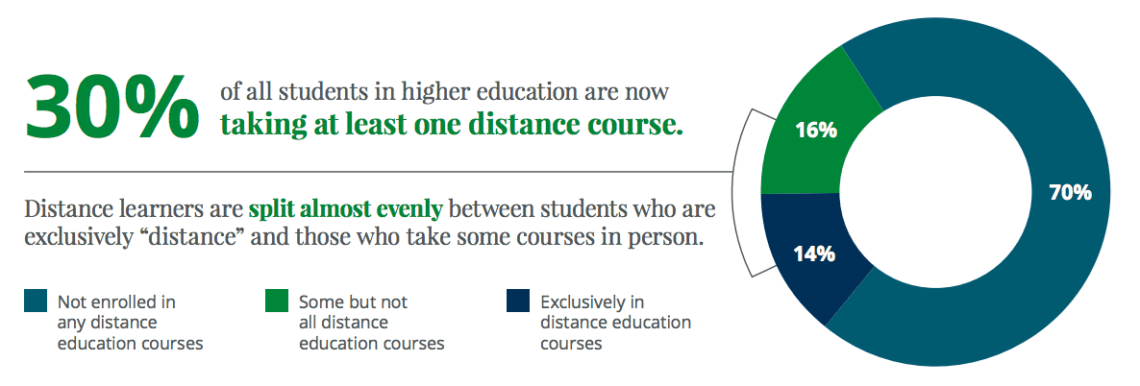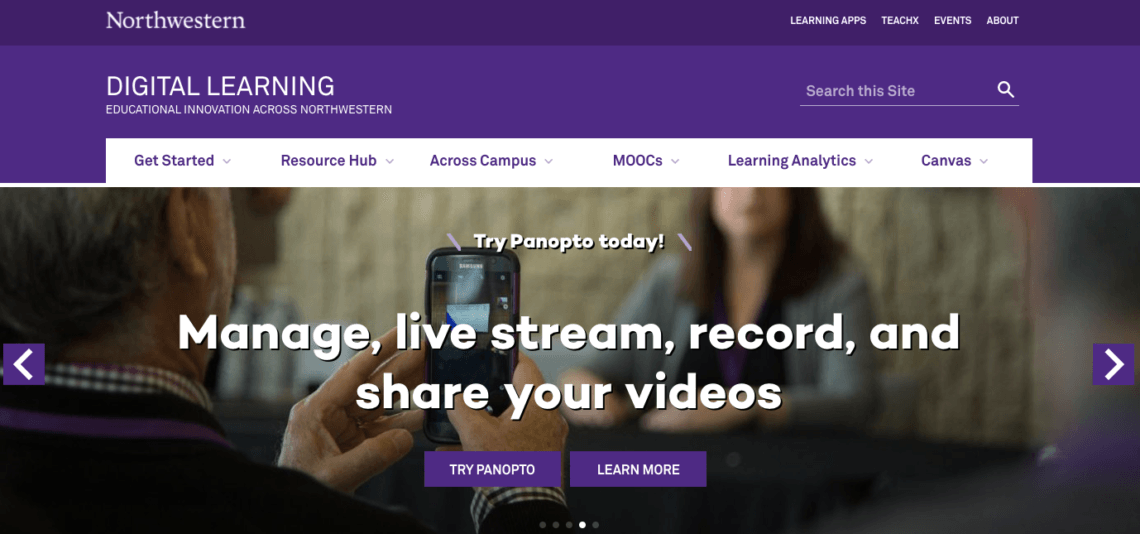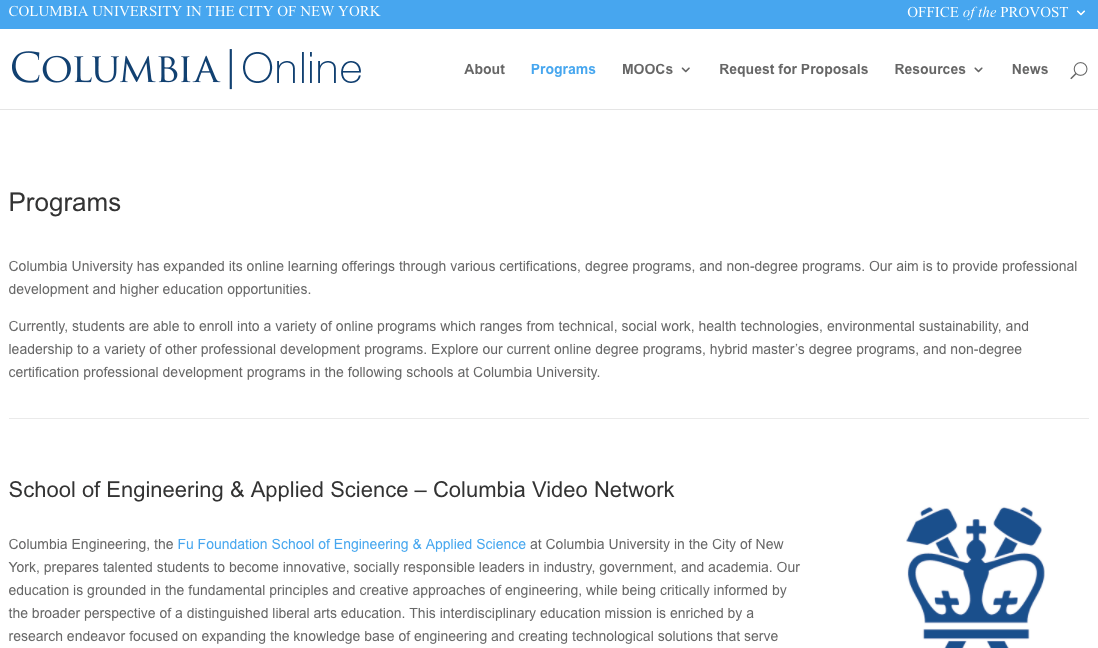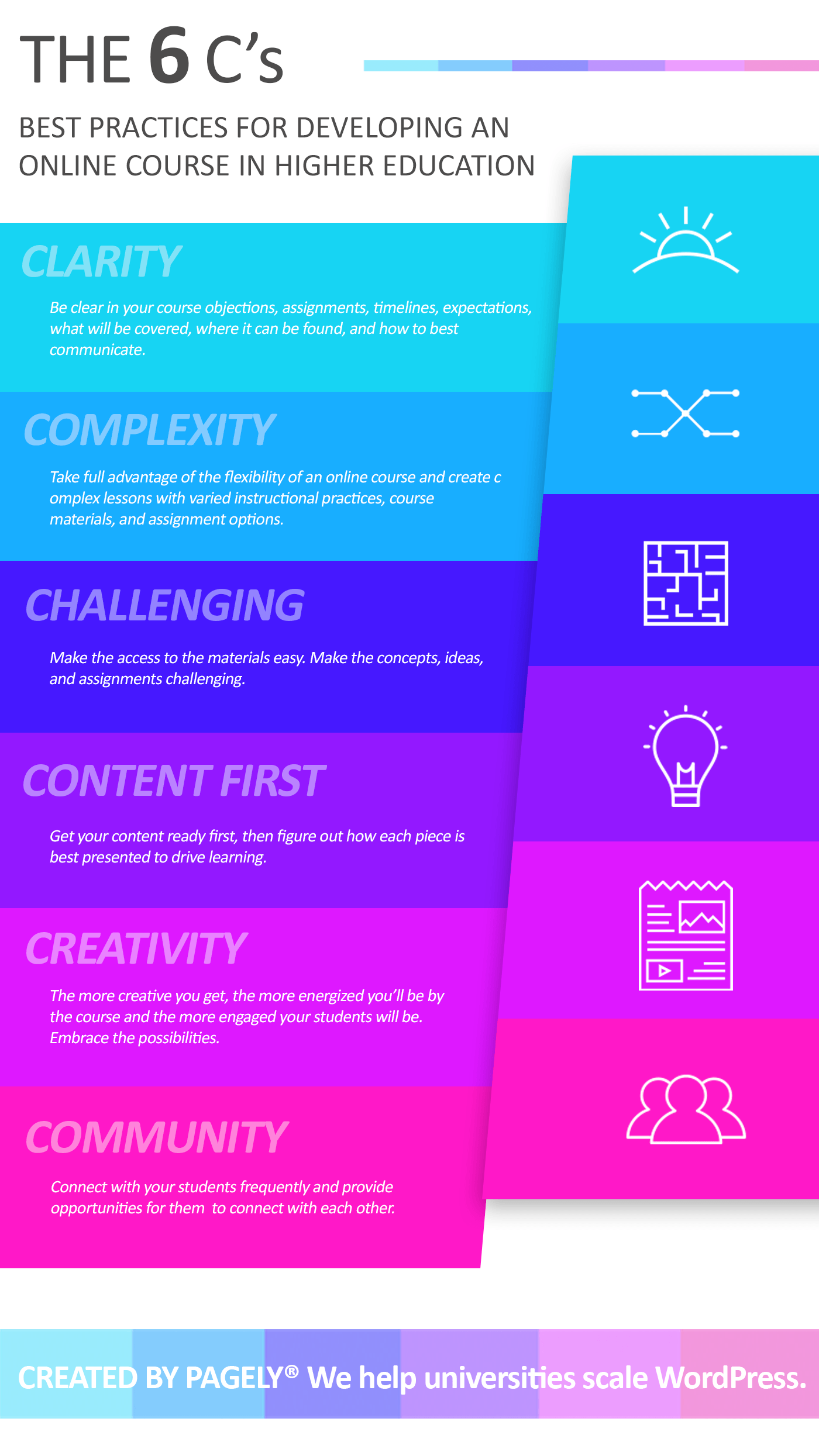Higher education online learning and distance learning have been on the rise for some time. According to the Digital Learning Compass: Distance Education Enrollment Report 2017, distance learning continued its annual growth trend. In the fall of 2015 more than 6 million students took at least one distance course, a 3.9% increase from the previous year. Plus, 30% of students in higher education are currently enrolled in a distance learning course.

No longer the domain of private for-profit schools, distance learning plays an even larger role in public and private nonprofit higher education every year, with nearly 30% of students taking at least one online course in 2015.
For over 20 years, colleges and universities have worked to conquer the challenges and maximize the opportunities presented by distance learning, a task that is becoming more and more important as the number of students choosing, at least in part, a degree path containing distance learning.
As you prepare to join the ranks of your colleagues by bringing your expertise and subject matter online for your students, it’s the perfect time to examine how to create an online course that engages your students, provides them with an opportunity that they can’t get in the traditional classroom setting, and frees you up to be as innovative and creative as possible, while maintaining your sanity.
Best Practices
It’s tempting, when discussing education technology and distance learning, to talk about the mechanics of delivering your content, the tools and technology you can use to build an online course. And while it’s important to make the right decisions about the tools you use in your course and method of delivery and course interaction, spending a great deal of time discussing specific hardware, software, apps and programs, provides diminishing returns over time.
Change and innovation happens so quickly that six months from now it will seem quaint that I’m discussing how popular Snapchat is when it’s been replaced by TalkMonster, (the newest social media site that I just made up right now but might exist this Christmas, who knows).
It’s better to focus instead on the underlying priorities, best practices, and challenges that will exist regardless of the technology de jour. If you do want to learn more about connecting with students, read this.
Many of the Six Cs that make up these Best Practices apply equally to traditional courses, but they take on a different level or type of importance in an online course.
Clarity
It’s harder for students to ask questions and get quick responses when the lessons and course materials are location and time shifted. That’s why it’s important to provide clarity from the start. The more clear you are in your own mind and in your course materials, the better the learning experience will be for all the students. Be clear in your course objections, assignments, timelines, expectations, what will be covered, where it can be found, and how to best communicate and many of the hurdles presented by having a class that is 100% online can be easily cleared.
Complexity
By selecting an online course, many students are choosing a level of freedom and control that they don’t have when a class meets in person on set days and times. They are not selecting a course because they expect it to be easier. Ok, some are, but that’s true of a percentage of every student not enrolled in Organic Chemistry.
One of the prime challenges for students in online courses is staying engaged in the course. Combat this by taking full advantage of the flexibility offered to you by having your class online and create complex lessons with varied instructional practices, course materials, and assignment options.
Your course, if you take advantage of the freedom provided to both you and your students, can be intricate and complex in ways a standard lecture can’t match. Shoot for complexity and you will find engagement.
Challenging
Your students, by and large, are digital natives. Mastering the technology involved in your course will be, for many of them, easier than finding the room the class would have been held in on campus. Mastering the content shouldn’t be.
You are fighting the distractions of social media, online video and music streaming, and anything else that might distract a college student sitting in their dorm room or apartment. If your course is not challenging and does not require their attention and interaction, you will lose them.
Make the access to the materials easy. Make the concepts, ideas, and assignments challenging.
Content first
As an undergrad, the location, date, and time a course was being offered was frequently a tie breaker at registration, but those factors were not the first things I considered when choosing a course. I tried very hard not to have any Monday morning or Friday afternoon courses, but first I looked for courses that I found interesting.
Distance courses work the same way.
As such, when you are building your course, focus on the content first then choose the technology you’ll use to help deliver it. This is backwards design carrier to digital platforms. You’d never plan your class meetings around the fact that you’d really like to show a movie next Thursday.
You know what the students need to learn and you choose the best way to deliver that information to them. That’s how your online course should work too.
Get your content ready first, then figure out how each piece is best presented to drive learning.

Creativity
This is the best part of building your online course. The restrictions you face in a classroom; layout, available technology, number of seats, time limits. All gone. The order, delivery method, length of your materials, assignment types, due dates, submission options, are all open for reimagining.
No more timezone constraints for your guest speakers – you can broadcast it live and make it available later for consumption whenever.
No more need to get that video clip down to 20 minutes so you can fit the rest of your lecture in around it.
No more are you bound to a powerpoint presentation, lecture, Q&A format. If you can dream it you can do it.
The more creative you get, the more energized you’ll be by the course and the more engaged your students will be. Embrace the possibilities.
Community
You need to keep them engaged. Have I mentioned that? Distance learning can feel isolating, though I’d wager this is a truer statement for Baby Boomers and Gen-Xers, than it is for Millennials who are accustomed to interacting with one another online to a much greater degree than those of us who made it to college before getting our first email account.
Still, there’s a give and take in a live classroom discussion that is tough to replicate virtually. You need to connect with your students frequently and provide opportunities for them to connect with each other to truly get the most out of your online course.
You are all involved in this learning experience together. Keep that sense of community at the forefront of your course design.
Pitfalls to Avoid
Lack of variety
We are all creatures of habit and teachers can have a tendency to fall back on what you know works. This can lead to the same type of lesson, presentation style, and assignments being used over and over.
Avoid this! Take advantage of time and place shifting, shifting and emerging technologies, and the differences brought by each group of students to add variety to your course.
Poor Naming Conventions
This goes to clarity. Be clear and consistent with what materials are called. Don’t tell students to open the “Procedures for Online Effectiveness” document and then post a document called “Effective Online Procedures.” This is confusing for students and incredibly frustrating. They’re sitting down, ready to get to work and they aren’t sure if they’re opening the right file or watching the right video because the names don’t match. And they can’t just raise their hand to ask.
Response Delays
They can’t ask you questions in person, don’t make them wait forever for a response. Be clear on your response turnaround and be true to what you tell them. This will help them learn and build a community of trust and respect.
Being too available
Working online allows students to engage with your content on their schedule, which may mean 3:00 am, or during your dinner time, or your kid’s baseball game. You do not have to be available to them at every minute of every day. Respond in a timely fashion, but don’t give them all of your time. If you answer a 3:00am email at 3:15am, they are going to start expecting that. Unless that’s also your preferred email time, don’t set the precedent. It will make you crazy.

Solutions to Common Problems
Lack of Support
Not meeting as a class at a set place and time can make it more difficult for students gain clarity or understanding for a difficult concept or to find a solution to a technical issue they are facing.
Setting and honoring policies on the best way to reach you and standard response time, establishing a time and method for group or individual conversations (virtual office hours or hangouts), and a library of easily accessible resources and FAQs can help provide the support students are looking for.
Just knowing when and where they can get answers to their questions is enough for many students.
Isolation
The answer to the feelings of isolation is community. By developing an open dialogue and encouraging students to connect with each other from the the beginning of the course, you make it harder for students to become isolated. Establishing a set virtual hangout time once or twice a week is also a helpful way to keep the class connected. Either the students are there, talking with – and learning from – each other, or their absence is noted and you or other students can follow up to keep them connected to the class.
Discipline
Finding the discipline to do the work can be a challenge for some students taking online classes. You can’t solve this problem for them, but you can provide some scheduled times when the class will meet virtually, provide clear deadlines and instructions, and offer some peer check ins or group work to help offset this. But, in the end, it’s up to them to do the work.
Technology
Technology changes and your school may use one system or another, so getting into the specifics of pros and cons is not overly helpful here. What is important is that you choose your platforms for ubiquity. Your software selections should be easy to come by.
Don’t choose things that are expensive for each student. Unless it’s something incredibly specific to a highly technical industry, there are cost effective, easy to use options that students can access on any device.
Don’t choose software or platforms that only work on Mac or PC or Google. Unless your school requires or provides a specific device to students you are going to have a class filled with laptops, tablets, Macs, PCs, Chromebooks, Androids, and everything else. Prepare for this and don’t make their device an obstacle to success in your class. Make it a gateway.
Get Help
You are the expert in your content area, not in video production, website design, database maintenance (unless those are also you content areas). Find help as you build the course. Find help to keep things running smoothly as the course moves along.
Professionals, interns, TAs – you can find a lot of people to help make all the pieces look, sound, and work great. You can focus on your content.

Implementation Strategy
Start Early
Take the lead time you normally use to get a new course designed and built, and add a couple of extra months to it, especially if this is your first time designing and offering an online course. You’re going to want that time to explore the options now available to you, solve for the complications that arise with not being in a classroom on a set day and time, and to fix any problems that occur.
You’ll also be relying on more outside help than you’re likely used to. You need to allow for their schedules as well.
The extra time may not be necessary, but you’ll feel better if you have it.
Backwards design
You’re designing a course. That’s it. That’s all. You know how to do that, so start how you always do, with your desired outcomes, goals, and objectives. Then build your assessments, lessons, and course materials.
As you do that, keep in mind the Six Cs. Clarity, Complexity, Challenge, Content First, Creativity, and Community.
Create your content, shoot your videos, line up your guest speakers, select your materials. Make sure you have excellent, engaging material that will teach help the students meet your desired outcomes.
And then, when the class is designed, and the content is ready, find the technology to help you deliver it. Don’t cram your content into what’s available. As Horatio said, “There is more online than is dreamt of in your philosophies.”


